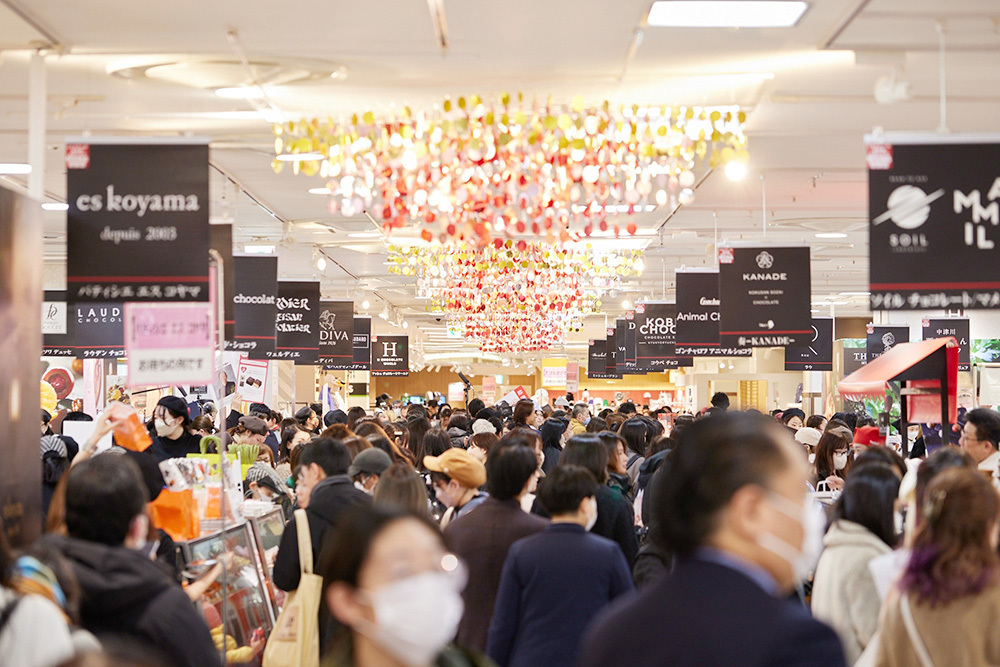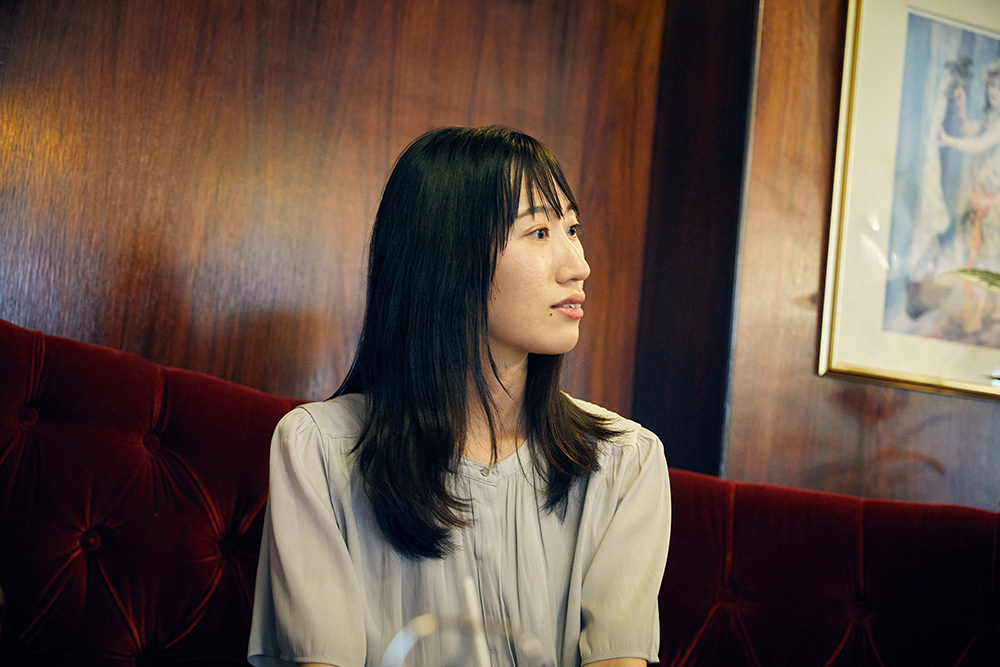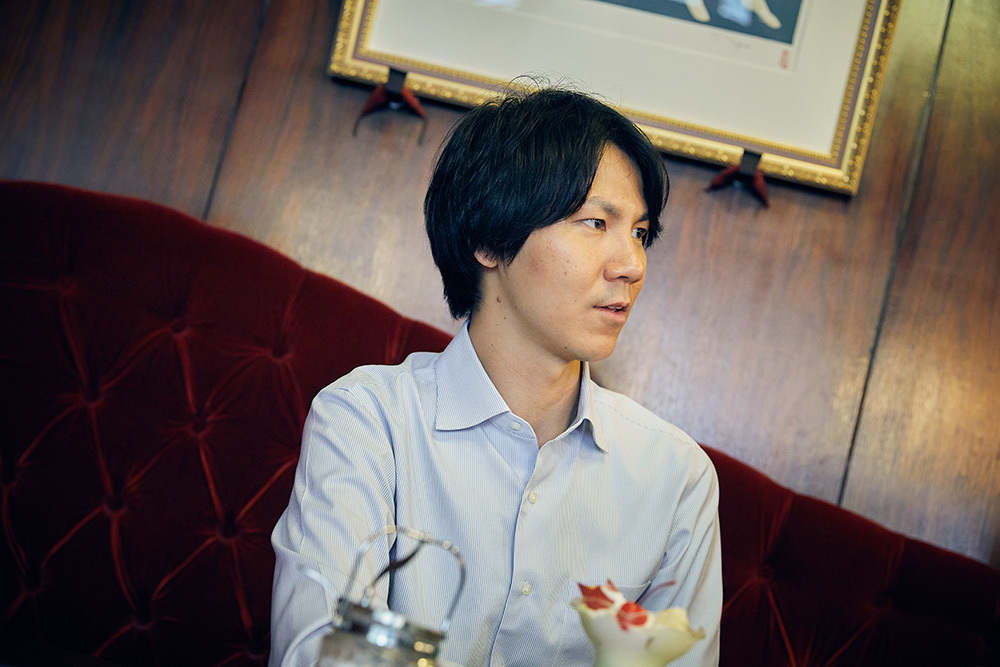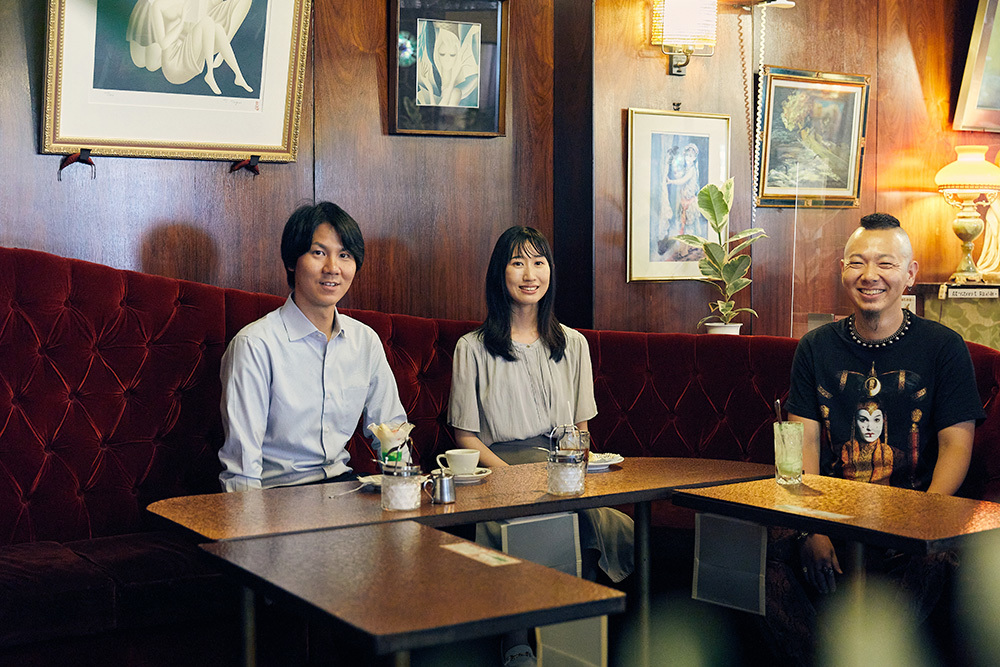Note: This website was automatically translated, so some terms or nuances may not be completely accurate.
What Marketers Need to Know About Nagoya: Insights from Chunichi Shimbun

Yuto Moriyama
Chunichi Shimbun Nagoya Headquarters

Murakami Kaho
Chunichi Shimbun Tokyo Headquarters

Kenichiro Ito
Dentsu Inc.
Dentsu Inc. has begun producing "Regional Fact Books" in collaboration with local newspapers to provide valuable insights for companies planning region-specific campaigns or test marketing. This series features interviews with newspaper representatives who know the regions covered in the Fact Books inside out.
The first theme is "What Marketers Need to Know About Nagoya: Insights from Chunichi Shimbun." Dentsu Inc. copywriter Kenichiro Ito, who is working on the Fact Book, spoke with Yuto Moriyama and Kaho Murakami of Chunichi Shimbun about various aspects of Nagoya.
We hope this conveys some of the unique characteristics of Nagoya and its people, and sparks your interest in marketing within Nagoya.

From left: Yuto Moriyama (Chunichi Shimbun Nagoya Headquarters, Media Business Division, Area Business Department & Business Production Department): Lived in Nagoya from birth to present, except during compulsory education. After joining the company, worked in advertising sales, planning and operating proprietary events, and promoting public-private partnership projects. Currently supports problem-solving utilizing Chunichi Shimbun's assets, primarily in the BtoG (Business to Government) domain.
Ms. Kaho Murakami (Media Business Bureau, Business Partner Division 2, Chunichi Shimbun Tokyo Headquarters): Born in Ichinomiya City, Aichi Prefecture. Spent her university years in Tokyo. After joining Chunichi Shimbun, worked in Gifu for 3 years and Nagoya for 1 year before transferring to the Tokyo headquarters. Currently handles advertising sales for the service industry and the restaurant sector.
Kenichiro Ito (Copywriter, Dentsu Inc. Creative Planning Division 2): Worked at the Chubu Branch for two and a half years starting in 2015. Loves Nagoya's coffee shop culture. Still frequently visits Nagoya due to Toyota-related work. Currently producing a "Regional Fact Book" in collaboration with Dentsu Inc. Media Services / Newspaper Division and local newspapers.
Do Nagoya People Love Events!?
Ito: Nice to meet you. I came all the way from Tokyo today to ask you both about Nagoya. I used to work in Nagoya myself, and when you think of Nagoya, its coffee shop culture is deeply rooted, right? The "Bonbon" (*1) we're talking about now is a popular traditional coffee shop I frequented when I was in Nagoya.
Moriyama: "Bonbon" has a long history and is frequented by locals. Their Western-style sweets are delicious too.
Murakami: Speaking of coffee shops, Ichinomiya City, where I was born and raised, is about a 10-minute train ride from Nagoya. It's said to be the birthplace of the "morning service." When I lived at my parents' house, we'd go to a coffee shop as a family around 7 AM on weekends to have the morning set. It gets crowded after 8 AM. Ichinomiya City even has maps introducing coffee shops offering morning sets and hosts a Morning Grand Prix event.
Ito: I'm surprised people enjoy morning sets that early! It's a unique local culture, isn't it? Speaking of Nagoya, "Nagoya-meshi" (※2) is also famous. Do you like it?
Murakami: Yes. Right now, I'm hooked on "Taiwan Mazesoba" and "Taiwan Ramen." There are popular shops like Menya Hanabi and Misen, and I even find myself looking for their branches in Tokyo.
Moriyama: I think people in Nagoya have a strong interest in food. In fact, gourmet events are held quite often here.
Murakami: Speaking of food, the chocolate festival "Amour du Chocolat" at JR Nagoya Takashimaya is incredibly popular. It sells products from various brands and types, and it's one of Japan's top Valentine's events in terms of both visitor numbers and sales.

Ito: Wow, there's an event like that! Beyond food-related things, I get the impression Nagoya has some kind of event happening every weekend. This is one of my foundational experiences of Nagoya: when I first transferred here, I went to a convenience store on a holiday and saw people cosplaying as anime and game characters like Naruto, Sasuke, Mario, and Princess Peach. I was like, "What's going on?" I later found out that the World Cosplay Summit (※4) was happening that day. I was surprised to learn it wasn't just a small local event, but a large international one with many overseas cosplayers participating.

Moriyama: That's an event unique to Nagoya. Another representative event for Nagoya is the "Nippon Domannaka Festival" (※5).
Ito: What kind of festival is that?
Murakami: Teams from all over Japan and abroad gather to perform dances rich in regional character. Many friends who went to university in Nagoya joined Yosakoi dance clubs and performed at Domatsuri. It's a festival deeply rooted in Nagoya, attracting participants across generations—university students, working adults in clubs, local teams, and more.
Ito: Ah. When walking around Nagoya, I've seen people practicing their dances. Do people in Nagoya, regardless of age, enjoy festivals and events?
Moriyama: People seem to have this image that Nagoya residents don't jump at new events, but that's not true. Neighborhood summer festivals are lively too, and I think we actually have a trait where we quite enjoy getting excited together.
Murakami: When you hear people around you say, "That sounds fun," it piques your interest. Once they get curious, many Nagoya locals think, "It might be crowded, but let's give it a try."
Ito: That's great news for event organizers. The Endoji Shopping District near Nagoya Station also hosts quite a few events, right? When I lived there, events like the Autumn Paris Festival (※6) drew huge crowds. Nagoya seems to have fertile ground for all kinds of events. Trying out events across different genres sounds like fun too.

※1 Bonbon: A long-established Western-style confectionery and pure coffee shop founded in 1949 in Higashi Ward, Nagoya. Enjoy morning sets and lunch in its Showa-era retro atmosphere. Handmade cakes and baked goods are also popular.
https://cake-bonbon.com/
※2 Nagoya-meshi: Regionally unique dishes widely accepted and loved in Nagoya and its suburbs, such as miso katsu, miso-nikomi udon, dote-ni stew, chicken wings, hitsumabushi, and Taiwan ramen.
https://www.nagoya-info.jp/gourmet/digest/
※3 Amour du Chocolat: Japan's largest chocolate festival held at JR Nagoya Takashimaya to celebrate Valentine's season. In 2024, it featured over 150 carefully selected brands from around the world, offering more than 2,500 types of chocolate.
※4 World Cosplay Summit: An event held since 2003 where cosplayers who love Japanese pop culture like anime, manga, and games gather in Nagoya City to deepen their connections. In 2024, representatives from 36 countries and regions participated. They walked the red carpet set up at the Oasis 21 complex in the city center and competed on the quality of their cosplay. A parade for general participants was also held. https://worldcosplaysummit.jp/
※5 Nippon Do-Manaka Festival: Japan's largest dance festival unfolding in midsummer Nagoya. Approximately 200 teams and 20,000 people from Japan and abroad gather to showcase dances rich in regional character. A citizen-participation festival open to anyone. https://www.domatsuri.com/overview/
※6 Entonji Shopping Arcade Autumn Paris Festival: An arcade shopping street with about 30 shops, located about a 15-minute walk from Nagoya Station. Many events are held throughout the year. The Autumn Paris Festival began in 2013. Like a Parisian market, it features stalls selling stylish goods, sweets, cafes, bistros, and more. Live accordion music and chansons on the streets create the atmosphere of a Parisian street. https://endoji-paris.net/
Do Nagoya residents like well-balanced spending!?
Ito: Now, tell us about "Nagoya people's spending habits." Nagoya residents are often said to be brand-conscious, right? Why do you think that is?
Moriyama: Maybe they're show-offs (laughs). Nagoya people are often said to have close mother-daughter relationships, and I see that with my own wife. She goes shopping with her mother, and I hear they've even bought brand-name bags together. Even if something is too expensive for one person to buy alone, they might think it's okay if mother and daughter share it.
Murakami: That said, they seem to have a clear sense of where to spend and where to save, right?
Moriyama: That's true. While Nagoya people are often called flashy, they're also said to be quite thrifty. It seems contradictory, but they clearly distinguish where to spend and where to save.
Murakami: Some people, including myself, spend quite a bit at events like the "Amour du Chocolat" we mentioned earlier.
Ito: When they decide to spend, they go all out, I suppose. I hear Nagoya also has high travel spending?
Moriyama: Yes. Many households own cars, and the proximity to the Shinkansen station makes travel convenient, which I think is part of the reason.
Murakami: People from Nagoya have always struck me as active. They want to go somewhere on their days off.
Moriyama: While downtown Nagoya is urban with its towering skyscrapers, the city also has large parks. Plus, mountains and the sea are nearby—just a 30-minute drive from the center takes you to areas rich in nature. Beyond that, the suburbs have many large shopping centers, so I think many people drive out on weekends.
Ito: Nagoya is definitely a car-centric society. Come to think of it, I often made radio commercials in Nagoya. I wonder if it's because many people listen to the radio in their cars?
Moriyama &Murakami: People definitely listen to the radio a lot in their cars. They might listen constantly. There are also many food events tied to radio stations.

Nagoya is a city where traditional culture thrives
Ito: Could you tell me a bit more about Nagoya's culture?
Moriyama: I worked in the business division for about four years, planning and running events hosted by the Chunichi Shimbun. During that time, I was in charge of the "Nagoya Castle Children's Shogi Championship." The finals are held in the Honmaru Palace at Nagoya Castle.
Ito: At Nagoya Castle!? Speaking of shogi, Sota Fujii is from Aichi Prefecture, right? Does Mr. Fujii participate in this tournament?
Moriyama: Yes. Mr. Fujii also gives instructional games for the children, which everyone loves. The venue is the Honmaru Palace, where the barrier paintings are displayed, and Mr. Fujii is present. Many children come wearing hakama. Aichi has always produced famous shogi players, but in recent years, it has been nurturing young talents, starting with Mr. Fujii. In 2022, the "Nagoya Shogi Tournament Hall" opened on the 25th floor of the Midland Square complex in front of Nagoya Station. Until then, the only permanent venues for official tournaments were in Tokyo and Osaka. Shogi culture is spreading in Nagoya.

Ito: Nagoya has a strong image of being deeply connected to traditional Japanese culture, hosting major sumo tournaments, for example.
Moriyama: Within the city, there's Arimatsu, a town that retains the atmosphere of the Edo period and is famous for its shibori dyeing. Pottery towns like Tokoname and Seto are also close to Nagoya, so various traditional cultures intersect here.
Ito: It sounds like it would be interesting to launch a collaboration project with artisans.
Murakami: Lately, it seems there are more young artisans. They introduce their work on social media and sometimes sell directly. The field for young people carrying on traditional culture has expanded compared to the past.

Ito: So, Mr. Moriyama, is there an event you'd like to try?
Moriyama: I'd like to plan a human chess event at the Bantelin Dome Nagoya (Nagoya Dome). While Tendo City in Yamagata Prefecture is famous for human chess, having local people dress as chess pieces inside the dome while professional players compete would likely draw a lot of attention.
Ito: Speaking of the dome, the Chunichi Dragons are also a symbol of Nagoya.
Murakami: The Dragons are a common topic among Nagoya residents. Even if you're not a die-hard fan, everyone sort of knows the players.
Moriyama: Not hardcore fans, but they have some knowledge. I hear baseball's popularity has waned compared to its peak, but at least in Nagoya, surprisingly many young people still like baseball. Families often go to games together.

Nagoya people are shy around strangers. But they love communication!?
Ito: Where do you feel the difference between Nagoya people and people from other regions?
Murakami: Maybe Nagoya people have more shared topics they can all get excited about together. Among my friends, I get the impression Tokyo kids have very different interests. Compared to that, Nagoya feels like a place where people actively share topics. Like the Amour du Chocolat we mentioned earlier—everyone tells each other which products were good. And "Domatsuri" (the festival) is also a huge talking point.
Moriyama: As mentioned earlier, things like mother-daughter spending or families going out for morning meals suggest fairly active communication within families. The abundance of events also reflects a desire to gather and enjoy things together.
Ito: Initiatives focused on deepening family or group bonds might gain support. On the other hand, I sometimes hear that companies from other regions perceive Nagoya as an exclusive, difficult market to enter.
Murakami: That's true. When I worked in Tokyo, I often heard concerns like, "We have a branch office in Nagoya, but it's hard to break into the Nagoya market."
Ito: So, even though they enjoy communication, they tend to be guarded toward people from other regions?
Moriyama: We do hear it described as "hard for newcomers to break into." Many people in Nagoya have a strong attachment and pride in their hometown. So, they might get irritated if outsiders make fun of them or impose their own preconceived notions. They stick together internally, but towards outsiders, there's a certain wariness at first...
Ito: I see. Given that the Chunichi Shimbun has deep roots in a region with such characteristics, is there something unique you can offer?
Moriyama: We have people from various professions, and as a newspaper company, we gather all kinds of information. If you're considering marketing or campaigns in Nagoya, we're confident we can often be of help if you just reach out to us casually.
Ito: Hearing your insights has really highlighted Nagoya's unique characteristics. We'd be delighted if you could also reference our Fact Book to support your campaigns and marketing efforts in Nagoya. Thank you very much for today.

Was this article helpful?
Newsletter registration is here
We select and publish important news every day
For inquiries about this article
Author

Yuto Moriyama
Chunichi Shimbun Nagoya Headquarters
Media Business Division, Area Business Department and Business Production Department
Except for the compulsory education period, I have lived in Nagoya from birth to the present. After joining the company, I worked in advertising sales, planning and operating proprietary events, and promoting public-private partnership initiatives. Currently, I primarily support problem-solving in the BtoG domain by leveraging the assets of the Chunichi Shimbun.

Murakami Kaho
Chunichi Shimbun Tokyo Headquarters
Media Business Division, Business Partner Department 2
Born in Ichinomiya City, Aichi Prefecture. Spent university years in Tokyo. After joining the Chunichi Shimbun Company, worked in Gifu for three years and Nagoya for one year before transferring to the Tokyo headquarters. Currently handles advertising sales for the service industry and restaurant sector.

Kenichiro Ito
Dentsu Inc.
Creative Planning Division 1
Copywriter
I enjoy working from scratch, using words as my foundation. My motto is "write until it's perfect," and I excel not only in advertising copy but also in internal communications that don't see the light of day. I've won numerous awards, including the TCC Award, ACC Award, and Galaxy Award. My hobby is metal engraving.


